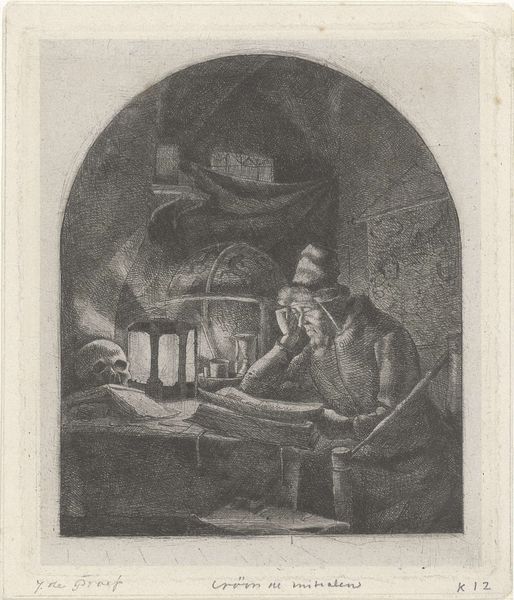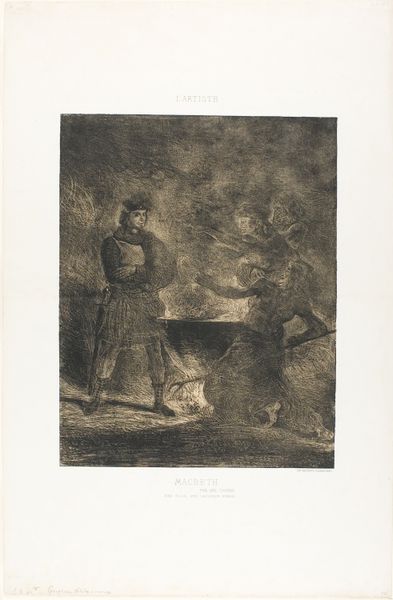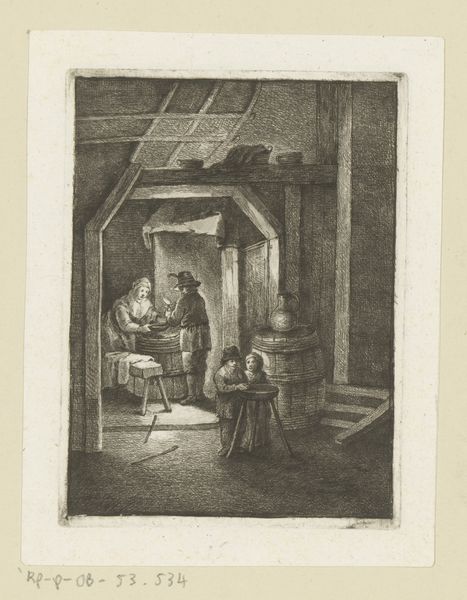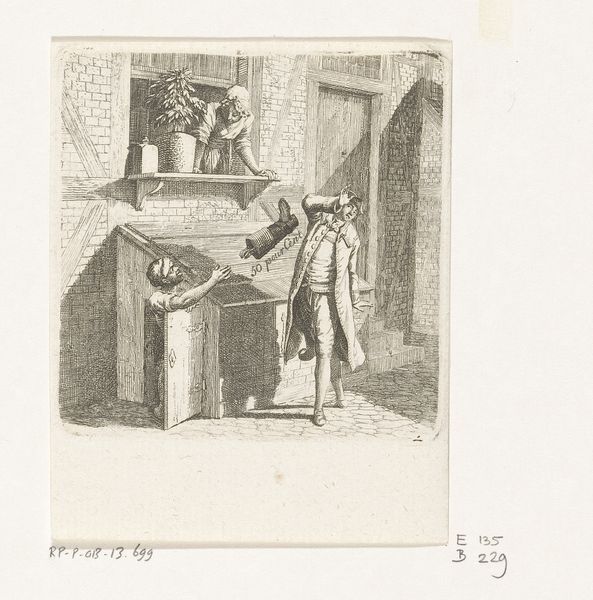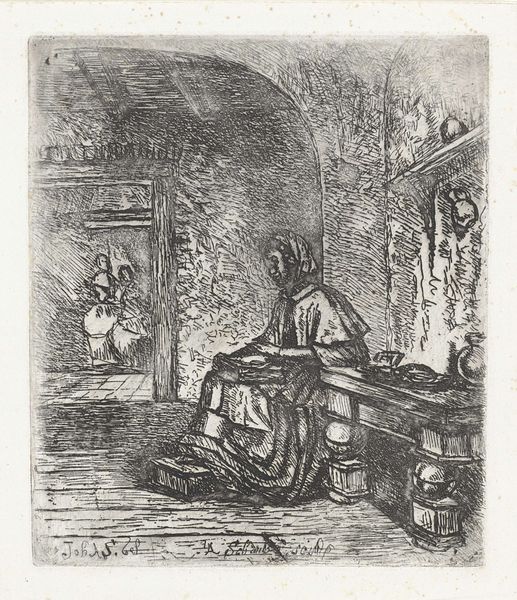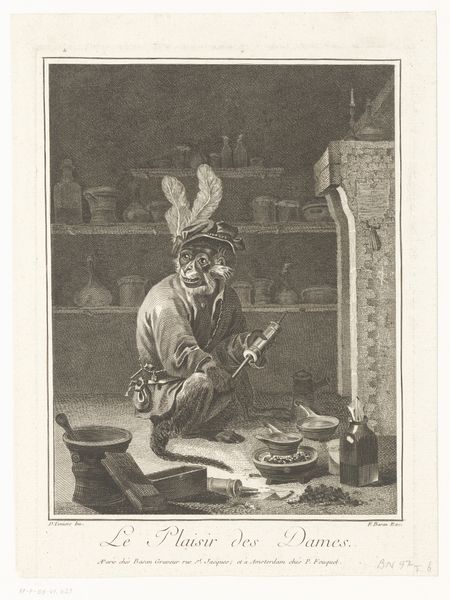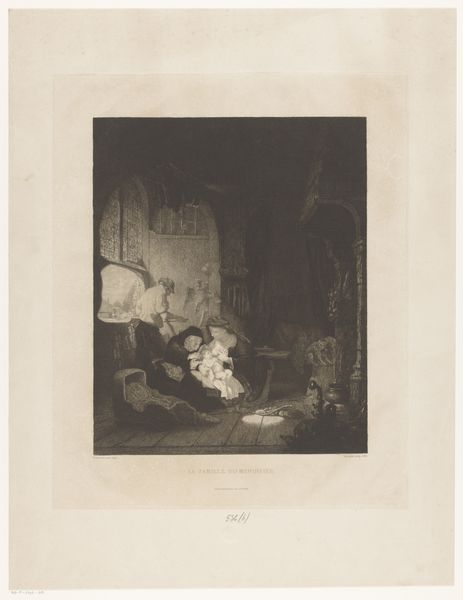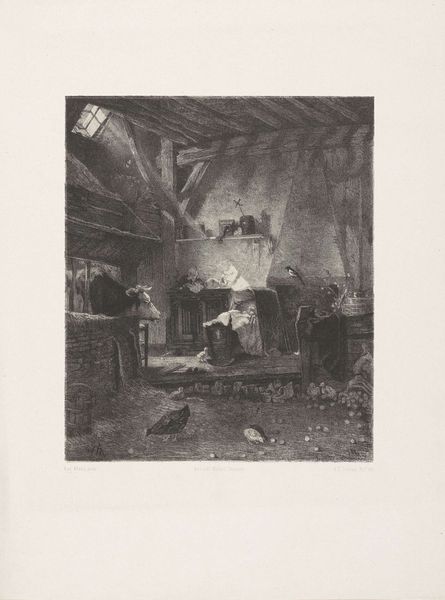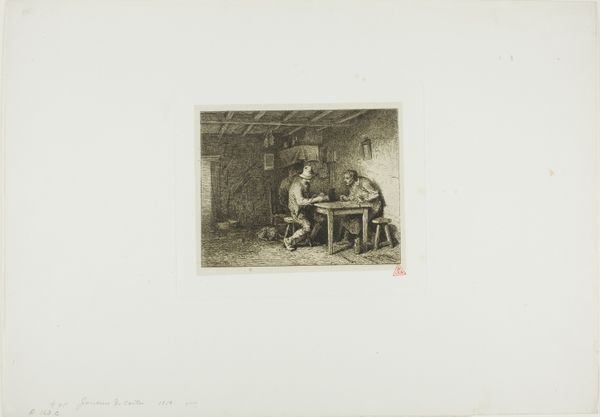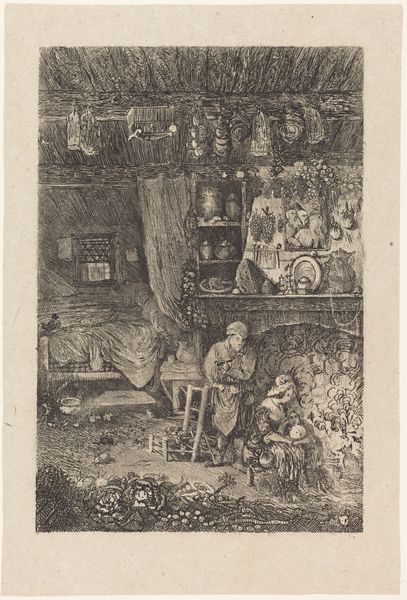
Dimensions: height 115 mm, width 146 mm
Copyright: Rijks Museum: Open Domain
Curator: Here we have Daniel Nikolaus Chodowiecki’s 1764 etching, "Jongen bij het spit," which translates to "Boy at the Spit." Editor: It’s quite evocative! My first impression is one of domestic intimacy, yet there's an underlying sense of labor, even poverty. The starkness of the etching emphasizes the simple reality of survival. Curator: Indeed. The image depicts a young boy dutifully turning a spit over a fire. It’s important to remember that such depictions of childhood were not always sentimental. Consider the socio-economic context of 18th-century Europe. Child labor was a common reality. How does knowing that reshape what you see? Editor: The fire dominates, a strong symbol of hearth and home but also hardship. It also strikes me how carefully rendered the basket is, filled with kindling. Curator: Baskets historically held cyclical meanings: birth, harvest, sometimes even secrets. Given the economic hardships many faced at the time, domestic scenes took on extra symbolic weight, conveying the limited freedoms of certain populations. Editor: Absolutely, and look at the boy’s attire: his simple cap and clothing indicate his social standing. Yet his posture seems somewhat resigned, perhaps aware of his place in society. Curator: The spit itself is fascinating. Meat on a spit wasn't merely food, but also an iconographic symbol of festivity, communal feasting. Who got to eat this? Editor: And the details, though simple, resonate across time – the pots and utensils, even the rough brickwork – reminders of continuous human endeavor, our ongoing negotiation with survival and comfort. Curator: Chodowiecki’s artistic choices give weight to the working class by rendering them central to the composition. They demand consideration, respect. I find this revolutionary for its time. Editor: I agree, especially because it captures something timeless about humanity – the daily grind, but also the inherent dignity in meeting basic needs. Curator: Examining pieces like "Boy at the Spit" makes us ask important questions about labour, about childhood, and what they represent. Editor: And reminds us to appreciate the depth of symbolism in what appears to be an ordinary scene. It carries cultural memory we might otherwise overlook.
Comments
No comments
Be the first to comment and join the conversation on the ultimate creative platform.

